#fnf sierra
Text


10 notes
·
View notes
Text

ASK EDDIE returns this Thursday, August 3, 7:00 PM PT to our Facebook page.
FNF prez Eddie Muller responds to film noir fan questions fielded by the Foundation's Director of Communications Anne Hockens . In this episode, we discuss “Sleep, My Love”, “Phantom Lady”, the precursors to Jules Dassin’s “The Naked City", film noir villains, our favorite character actors, Ida Lupinoand more. We also give our recommendations for books that were made into film noirs. On the cat front, Charlotte is a background player and Emily won’t come out of her trailer. Want your question answered in a future episode? We solicit questions from our email subscribers in our monthly newsletters. Sign up for free at https://www.filmnoirfoundation.org/signup.html
Everyone who signs up on our email list and contributes $20 or more to the Film Noir Foundation receives the digital version of NOIR CITY Magazine for a year. Donate here: https://www.filmnoirfoundation.org/contribute.html
Can’t join us on Thursday? No problem! A recording will be up on our YouTube channel, @NoirCity, on Friday, August 4: https://www.youtube.com/user/NoirCitySF
Note: Eddie will not be able to answer questions posted during the livestream nor ones left on our social media accounts
This week’s questions:
Do you think that the CRIME DOES NOT PAY shorts series is a precursor to films like THE NAKED CITY?
Liz
Keep seeing Alfred Newman name for music credits. Was he the inspiration for Mad Magazine’s Character?
Kitaman
How have the classic noirs and noir performers fared at Oscar nomination time? Any egregious snubs?
Ben
Why is Hitchcock's NOTORIOUS never shown anymore? And 1948’s SLEEP, MY LOVE with Claudette Colbert, Don Ameche and Robert Cummings. If it's in the "vault" any possibility of its ever showing
Jenene
I think PHANTOM LADY isn't merely overrated, it's awful. Really none of it rings true. The whole film is weak, I think. Most especially Franchot Tone. Interested if you agree.
Nick
The collision of humor and noir is an interesting topic, don’t you think? I was thinking about this recently when I saw Dick Powell in the very weird, 1951 film YOU NEVER CAN TELL. What is your favorite example of humor in classic film noir?
Kingpin Johnny, Doylestown, PA
Is there an actor that has played a villain in more than one film noir movies? And the performance was memorable.
Jeff from Brooklyn
Who is your favorite film noir character actor and why?
Harry, West Chester, PA
My question is about Ida Lupino's story. Did it become a movie, or maybe more important, could it? Based on what you said it appears to be perfect for these times.
Barb
Can you recommend books to read that were eventually made into film noirs?
Valencia
By any chance, are Eddie Muller, Anne Hockens, and/or the Film Noir Foundation using Letterboxd? Letterboxd lets you keep track of movies you have watched. You can rate them, log them in a diary-style Brett- Edmonton, Alberta, Canada
I wrote a short film screenplay (6 pages) for a present-day noir which I sent to the Santa Barbara International Screenplay Awards, for analysis only. They gave it a favorable score, but I think it would have been higher if they read it as a film noir. My question is, if you are trying to write a screenplay reflecting the aesthetics of Film Noir, is there an organization I can send it to that can judge it for what it is?
William
THE TREASURE OF THE SIERRA MADRE: Noir or Not?
Doug, Silver Spring, MD
What are your opinions on these German crime films:
IT HAPPENED IN BROAD DAYLIGHT (1958)
THE DEVIL STRIKES AT NIGHT (1957)
WET ASPHALT (1958)
ALIBI (1955)
STOLEN IDENTITY (1953)
A DEGREE OF MURDER (1967)
WHIRLPOOL (1959)
And are there precursors to the currently popular Scandinavian noir films?
Greetings from the Netherlands, Maarten
Did you ever have the chance to meet either Siskel or Ebert, and talk about movies with them? Did they share any special insights about noir movies with you?
Dan from South Dakota
#film noir#film noir foundation#noir city#eddie muller#anne hockens#the naked city#sleep my love#phantom lady#cornell woolrich#you never can tell#character actors#ida lupino#the treasure of the sierra madre#german film noir#scandinavian noir
8 notes
·
View notes
Text
slot your pennies in the vending machine of love!




#IN ORDER#crush n sprite#manzanita sol n pepsi#sierra mist n perrier#aaaand a&w n dr pepper :)#i put FAR too much thought into this one lads#and i didn’t say shit y’all weren’t expecting a thing >:)#trust me when i say ive been fucking obsessed with that goddamn song it just goes too hard#digital art#self ship community#self shipping community#romantic f/o#fnf senpai#fnf garcello#peachyverse garcello#toh raine#fnf chris#hellbent chris#muriel of the kokhuri#consul valerius#sdv shane#sdv harvey#peachyart#also hiiii never posted my updated peachycana refs but. yea <3#lovesick fool 🐻#hand in farmhand 🌶️#hearts sent soaring ☕️
45 notes
·
View notes
Text
person: do you know a gay demiboy with autism that kins various fnf characters, gets gender euphoria from inanimate objects & vaportrap music, has trouble differentiating romantic and platonic attraction, loves mint and black color palettes, and has an obsession with lime sodas like sierra mist?

me: no
4 notes
·
View notes
Text
For your information... (PLEASE READ!)
Dni if you are nsfw ddlg/cgl, anti-agere, abdl, pedo/MAP, anti-anti, anti-lgbt (including anti xeno/neo), racist (etc), terf/radfem, ableist. Admiting any if these to me in asks will immediately get you blocked. You won't get any funny reactions out of me.
I'm above 18. So please, this is an 18+ account! If you wanna follow, I can't stop you. But please, if you're under 18, don't ask or beg to be my friend. I'm sorry, but don't take it too hard!
~~~
About me!
Hi! I'm Lavender/Phoenix! I'm 23 years old, and I use all pronouns but I prefer She/They! Still looking into Xeno/Neopronouns atm!
I'm Demi, Omnigender, and Polyam ([T4T/NB4NB]), I have ADHD, and I would like to request you use tone indicators with me! [I'm both unable to tell tone over text and just slow in general!]
~~~
Mario Ship Blog - @luaisler
Jojo's Blog - @shadows-over-morioh
Pokémon Blog - @conducting-unova
Pikmin Blog - @louies-recipes
Castlevania Blog - @guardian-soul
Touhou Blog - @scarlet-fog-over-gensokyo
Kirby OC Ask Blog - @sierra-the-puffball
Stardew Valley Ask/RP Blog - @spikes-n-studies
PT Blog (You can find all my other PT blogs here!) - @noisy-boiseys
Khonjin House/Supermental Blog - @peppeppeppepperoni-pizza
FNF Blog - @funk-it-up-girlfriend
Creepypasta/Unfiction/ARG Blog - @lavenders-emergency-machete
My joyfriend!! Go look at hys blogs! Rn! - @donedays
And Our Animal Crossing Lore Blog! (Yes, it's nearly as insane as you think it is!) - @galareef
~~~
Tags
👾 - games and goofy stuff
💎 - lovey dovey stuff
⏳ - my personal aes stuff
~~~
"If history is to change, let it change! If the world is to be destroyed, so be it! If my fate is to be destroyed... I must simply laugh!!" - Magus, Chrono Trigger
10 notes
·
View notes
Text
I wanted to post something on my Multi-fandom account here. (It's me @prismtheartweirdo btw)

Manifest but it's Sierra.
Wow... My first Total Drama fanart in months. I am aware that the Sky mod was deleted, but I couldn't help but think that Sierra and Sky gives off those same "crazy-fangirl" vibes.
I really like FNF, but I haven't draw a Total Drama fanart in months, so why not both?
I total imagine that Sierra would act like Sky if someone tries to "steal" Cody from her.
I actually tried attempting my own new artstyle, so hopefully you like it!
#artwork#artist#doodle#drawing#total drama#tdi#tdwt#tdwt sierra#sierra#sierra total drama#crossover#my art#manifest#manifestfnf#sky mod#i was bored
10 notes
·
View notes
Note
What do you think fnf Girlfriends name would be if she had one? To me she seems like a Sierra or maybe Alice.
I think Charlotte has a nice ring to it (she could also have the nickname “Cherry” since she loves the soda, wears red, and gives Keith a good opportunity to call her an “adorable cherry”)
22 notes
·
View notes
Text
The Sound of Fury

“America, as a social and political organization, is committed to a cheerful view of life,” Robert Warshow wrote in his seminal 1948 essay “The Gangster as Tragic Hero.” Democracies depend on the conviction that they are making life better and happier for their citizens; only feudal and monarchical societies can enjoy the luxury of fatalism or a fundamentally pessimistic view of life. Praising the gangster genre as a form of modern tragedy, Warshow also accounts for film noir in his statement that, “There always exists a current of opposition, seeking to express by whatever means are available to it that sense of desperation and inevitable failure which optimism itself helps to create.” The gangster’s demise is the purest American tragedy because it is driven by his mania to climb the ladder of success. The end of his saga is inevitable, so in chasing success he is really chasing failure; his self-destructiveness expresses defiance at the inevitability of defeat, but also confirms it.
This underground river of pessimism and disillusionment unites the pre-Code films of the early thirties and postwar film noir; they share a tone of bitter gallows humor; a satisfaction in being wised-up, knowing the score; they flaunt the scars and calluses of lost innocence. Pre-Code movies reflected the free-fall of the Depression, the farce of Prohibition and the dizziness of a society edging towards anarchy. Noir exposed the suppressed anguish of WWII, the anxiety of the Cold War, the stresses of conformity and materialism.
Films like Cry Danger (1951)—recently restored to full glory by the Film Noir Foundation—depict a battered, abraded country that has turned cynicism into a running gag. A man just out of prison after serving five years for something he didn’t do trades sour wisecracks with a one-legged, alcoholic ex-Marine. They make their home in a dilapidated trailer in a scruffy park perched on Bunker Hill, where the proprietor sits around strumming a ukulele and ignoring the busted showers. The vet (Richard Erdman) falls for a pickpocket who steals his wallet whenever he gets drunk. The ex-con (Dick Powell) idealistically tries to vindicate his best friend, who’s still in jail, only to find out he’s a double-crossing liar. The film achieves an extraordinary blend of the glum and the snappy, a deadpan insolence that saturates the air like smog. “What’s five years?” Powell says of his stretch. “You could do that just waiting around.”
While pre-Code movies gleefully portrayed an “age of chiselry,” a country where everyone was looking for an angle, they never plumbed the depths of alienation, fatalism and misanthropy that noir opened up. For all their knowing skepticism, Depression-era films evoke a sense of camaraderie, a shared body heat from people huddled and jostling together—maybe cheating each other, but still sharing jokes and boxcars, Murphy beds and stolen hot-dogs. Noir, by contrast, purveys a chilling sense of isolation and social atomization; not only institutions but individual relationships are corrupt and predatory. There’s no longer a hard-times sense of being all in the same boat. As Kirk Douglas nastily smirks at his colleagues in Ace in the Hole: “I’m in the boat. You’re in the water.”
Noir used unpretentious, low-budget crime thrillers to smuggle this caustic vision into movie theaters during a time when, on the surface, America was at the height of prosperity and social cohesion. Unlike the early-thirties gangster cycle, which reflected a real wave of lawlessness, the crime movies of the fifties were made during a time when the murder rate was lower than in previous or succeeding decades, perhaps as a channel for other, submerged anxieties. Noir’s prophetic vision of disintegrating communities has become only more compelling with time, a development that may explain the passionate revival of interest in film noir in the last decades of the twentieth century.
Healthy, functioning groups don’t exist in noir; even gangs and criminal “organizations” fall apart because their members are out for themselves, ready to betray each other for a payoff or a bigger share of the take. Institutions like politics and business appear only in stories revealing their corruption. The police are the only representatives of government commonly seen, and they are often bullying and crooked, hounding innocent suspects with sadistic relish. Even films that take the side of law enforcement underline hostility between cops and the people they protect. Apart from the justice system, the public sphere does not exist: the town meetings and popular movements that crowd the screen in thirties films, with indignant and excitable citizens marching, rioting or celebrating, are unimaginable in film noir. People seem to exist in a vacuum.
In part, this vision reflects the privatization of life that accelerated in the postwar era, as cars replaced trains; television replaced movie theaters; appliances eliminated the need for servants, milkmen and ice men; suburban back yards took the place of parks, all part of the glorification of the detached home for the “nuclear” family. The homogeneity of the suburbs and the intrusiveness of media and advertising paradoxically diminished any sense of place or community. Meanwhile, Cold War paranoia meant that expressions of communitarian spirit or calls for collective action could rouse suspicions of communist sympathies.
Many of the writers, directors and actors associated with film noir were liberals, often former Communist Party members who had seen the left-wing idealism of the thirties buried by World War II and then vilified during the Cold War. Disillusioned, they used crime movies to indict a culture of rampant greed and cut-throat competition. Thieves’ Highway(1949), the last film directed by Jules Dassin before he left the country to escape the blacklist, slices open the produce business to reveal the rotten heart of capitalism. Even something as pure and nourishing as an apple becomes a poisoned agent of strife when it’s equated with money. A Polish farmer, enraged at being paid less than he was promised for his apples, flings boxes of them off a truck, screaming, “Seventy-five cents! Seventy-five cents!” The apples roll wastefully across the ground, an image foreshadowing the film’s most famous shot, when after the same truck has careened off the road and exploded, apples roll silently down the hillside toward the flaming wreck. When the dead trucker’s partner finds out that money-grubbers have gone out to collect the scattered load to sell, he begins kicking over crates of apples, fuming, “Four bits a box! Four bits a box!” Everyone in the movie is “just trying to make a buck,” and cash haunts the film, dirty crumpled bills changing hands in a series of soiled, coercive transactions.
It is easy to see why the House Un-American Activities Committee wanted to drive people like Dassin out of Hollywood. Films such as Joseph Losey’s The Prowler (another Film Noir Foundation restoration) and Cy Endfield’s The Sound of Fury, (a.k.a Try and Get Me! 1950, the FNF’s next project) are scathing attacks on a materialistic society, unmasking the American dream as a shallow and shabby illusion that breeds crime and shreds the social fabric. (Both directors fled to England in the early fifties to avoid persecution by HUAC.)
Endfield’s stark anti-lynching drama opens with a down-on-his-luck family man hitch-hiking on a dark highway; he tells the trucker who picks him up that he’s been looking in vain for a job. Howard Tyler (Frank Lovejoy) moved his wife and son out to the postwar California suburb of Santa Sierra, hoping for a better life; “I can’t help it if a million other guys had the same idea,” he complains bitterly. They live in a shabby little bungalow behind a wire fence that makes the place look like a miniature P.O.W. camp. Howard’s pregnant wife hates the idea of using a charity clinic, and frets over money owed for groceries, while his whiny little boy begs for money to go the baseball game (“All the other kids are goin’!”) A bartender at a bowling alley sneers at his cheap customer: “You take a beer drinker, you got a jerk.” If Howard weren’t so dejected and humiliated, he would never fall under the spell of Jerry (Lloyd Bridges), the vain braggart he meets at the bowling alley.
Primping and preening, flexing his muscles and showing off his fancy aftershave (“Smells expensive!”), the manic Jerry boasts about his sexual conquests and the big money he makes, and he treats the modest, submissive Howard like his valet. He offers to put him onto something good—“nothing risky”—just driving the car for his hold-ups. When Howard hesitates, Jerry snorts, “You guys kill me! The more you get kicked in the teeth the better you like it.” Their first job is knocking over the grocery store at a cheap motel (“The Rambler’s Rest”), where Jerry easily intimidates an elderly couple and pistol-whips their son. Intoxicated with the easy money—and a few stiff drinks—Howard bursts in on his family with armfuls of groceries. His wife gasps at the extravagance of baked ham and canned peaches, and he brags that now they can get their own TV, and won’t have to go over and watch their neighbors’. “And we’ll throw this piece of junk away!” he crows, pointing to the family’s radio. Soon Howard is buying his wife new shoes and dresses with hot money, telling her he has a night job at a cannery. His little boy sports a cowboy outfit and ambushes his jumpy father with toy guns.
Unsatisfied with these penny-ante crimes, Jerry comes up with a scheme to kidnap a wealthy young man and hold him for ransom. He’s overcome by envy as he fingers the victim’s suit, tailor-made in New York, and after they’ve taken him out to a gravel pit in a disused army base, Jerry panics and kills him. When Howard gets home, dazed with horror and guilt, his wife wakes and tells him about the lovely dream she was having: she had the baby and this time there was no pain at all; “I got right up out of the hospital and took her shopping. I was buying her a pinafore.” Even in her dreams she’s a consumer, subconsciously linking commercial goods with the fantasy of a painless life.
As Howard mentally unravels, the shoddy vulgarity of the culture around him takes on a sinister cast. Jerry shows him the ransom note he’s written in a diner while ordering a steak sandwich (“Cow on a slab!” the waitress yells.) For cover, they go out of town to mail the letter, taking along Jerry’s girlfriend, a glossy blonde, and a lonely manicurist she has dug up for Howard. In a nightclub, he’s subjected to a string of dumb jokes and parlor magic tricks from a burlesque comedian. “Blame my psychiatrist,” the comic quips, “I didn’t pay my bill last month and he’s letting me go crazy.”
From its opening moments, the film depicts the crowd as a mindless and malevolent force, which will eventually be stirred to frenzy by sensationalizing newspaper articles. Crowds in noir are always bloodthirsty mobs, surrounding and destroying strangers in their midst; the communal desire for security is tainted by bigotry and ignorance. This is a dark inversion of Capra’s rallying citizens, or even the all-for-one armies of bums who fight for their squatters’ rights in Wild Boys of the Road. Movies of the Depression era never saw anything wrong with wanting money, good food, a pair of shoes, or even fur coats and diamond bracelets. They are tolerant of people—especially women—who do whatever they have to do get ahead. By contrast, The Sound of Fury shows materialism—the desire to keep up with the neighbors, to make a better life for your family—as a force that corrodes souls and breaks down social decency. The deepest well of pessimism in noir is a distrust of change, desire and ambition. “I just want to be somebody,” people are always saying, but the urge to squeeze more out of life, to grab a chance at happiness, is brutally punished.
Below the surface, the force driving noir stories is the urge to escape: from the past, from the law, from the ordinary, from poverty, from constricting relationships, from the limitations of the self. Noir found its fullest expression in America because the American psyche harbors a passion for independence, an impulse to be, in the words of Walt Whitman, “loosed of limits, and imaginary lines, / Going where I list, my own master, total and absolute.” With this desire for autonomy comes a corresponding fear of loneliness and exile. The more we crave success, the more we dread failure; the more we crave freedom, the more we dread confinement. This is the shadow that spawns all of noir’s shadows: the anxiety imposed by living in a country that elevates opportunity above security; one that instills a compulsion to “make it big,” but offers little sympathy to those who fall short. Film noir is about people who break the rules, pursuing their own interests outside the boundaries of decent society, and about how they are destroyed by society—or by themselves.
The gangster, Robert Warshow wrote, is driven by the need to separate himself from the crowd, but in doing so he isolates and dooms himself. White Heat (1949), which brought James Cagney back to the gangster persona that made him a star, came out one year after the publication of “The Gangster as Tragic Hero.” It took the “man of the city” (as Warshow defined the gangster) out of the city, but Cagney’s explosive death atop an industrial gas tank is the supreme illustration of Warshow’s observation that the gangster’s pursuit of success—“Made it, Ma! Top of the world!”—is a pursuit of death.
White Heat is also a perfect example of what Edward Dimendberg (in Film Noir and the Spaces of Modernity) called “centrifugal” noir: it’s a film without a center, about a world flying apart like the cooling fragments of an exploded star. Cagney’s gang, decaying under the strains of resentment, betrayal and madness, moves between equally bleak urban and rural hideouts. After robbing a train in a rocky no-man’s-land, they hole up in a frigid, creaky old farmhouse “a hundred miles from nowhere,” as Cagney’s wife gripes. Cooped up together in this gloomy Gothic house, surrounded by split-rail fences and naked, rolling hills, they snipe at each other and grumble about their leader. Cody Jarrett (James Cagney) suffers debilitating migraine headaches and huddles in the lap of his gaunt, fiercely loyal Ma. The realization that came to Cagney in Public Enemy as he stumbled into the gutter in the rain—“I ain’t so tough”—is here amplified into an infantile weakness, perpetually on the verge of breakdown. Cody’s frailty only makes him more vicious. At his orders the gang leaves a wounded member behind, bandaged and in pain, to freeze to death once they make their move to a motor court in LA. The motel is typical of the “non-places” (in Marc Augé’s term) where noir flourishes: marginal, transient spaces where “people are always, and never, at home.”
The banality of the modern west makes room for Cagney’s majestically psychotic performance, fine-tuned and sensitive as a landmine. Cody Jarrett crumples inward under the crushing pain and then erupts, and White Heat similarly closes in and then shatters people are either cramped in suffocating enclosures (Cody shoots a man while he’s locked in the trunk of a car, cruelly offering to “give him some air”), or stranded in vacant, inhospitable spaces. At the rural hideout, the wind is always blowing bitterly around the house, tossing the trees; Cody walks alone at night, talking to his dead mother, who was shot in the back by his wife while he was in jail. He tells a friend—really a police plant who will betray him—how lonesome he is, because “all I ever had was Ma,” and how hard his mother’s life was, “always on the run, always on the move.” White Heat brings together the ultra-modern—radio tracking devices; drive-in movie theaters—with the pre-modern, even the primitive. It proves not just that film noir can thrive in the country as well as the city, but that noir was not merely a response to the new—industrialization, the bomb, etc.—but drew on deep veins in the American psyche and the American landscape: the desire to stand alone on top of the hill, even if there’s nowhere to go from there but death; and an accompanying fear of being buried “on the lone prairie,” having no one to talk to but the night wind.
by Imogen Sara Smith
#Imogen Sara Smith#The Chiseler#The Sound of Fury#James Cagney#White Heat#Raul Walsh#Noir#In Lonely Places: Film Noir Beyond the Cit#Buster Keaton: The Persistence of Comedy#the criterion collection
6 notes
·
View notes
Text








Sigh
Art dump
#regretevator infected#infected fanart#headcanon#ash ketchum#ash pokemon#COLEZ EPIC ART TAG!!#fnf cache#fnf sierra#fnf bryce#applin
6 notes
·
View notes
Text
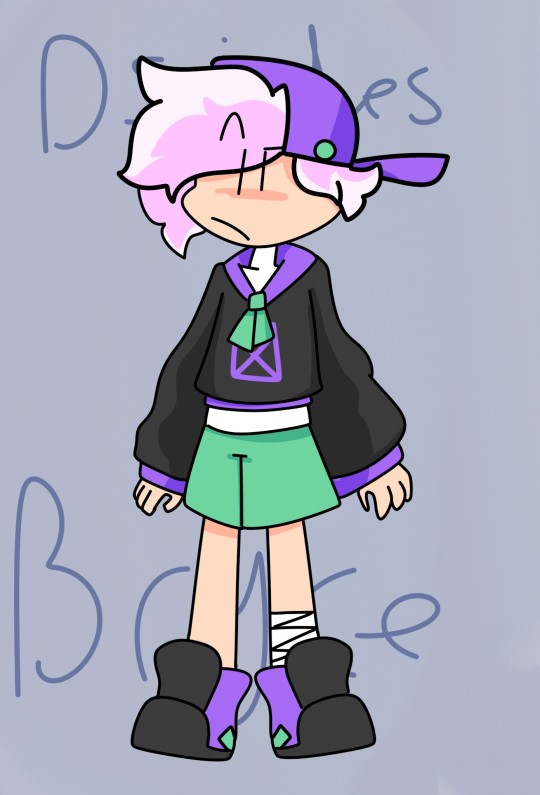

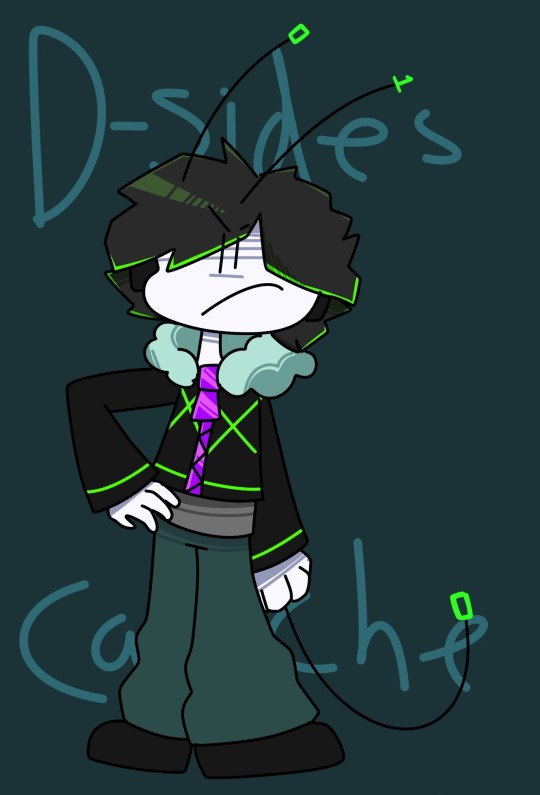
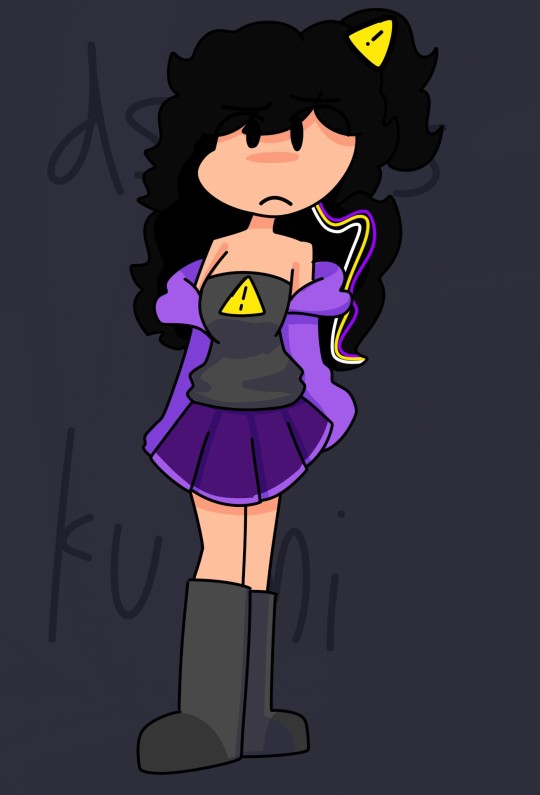
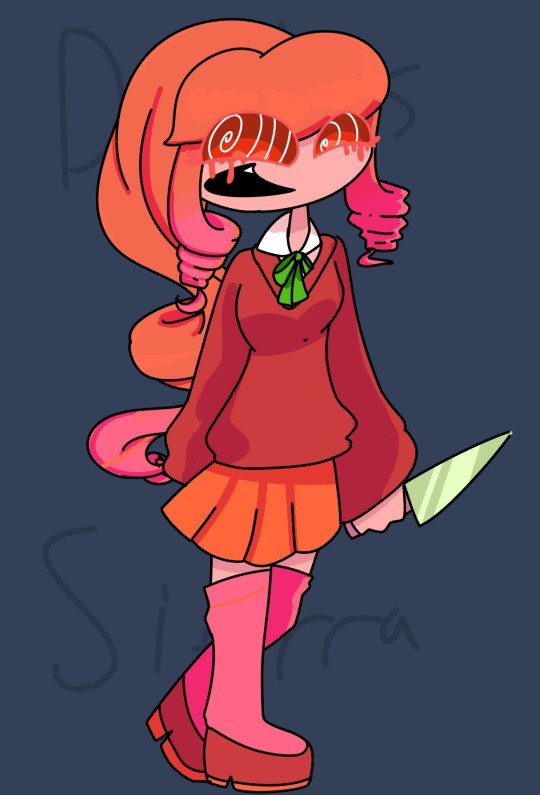

#COLEZ EPIC ART TAG!!#fnf d sides#friday night funkin#fnf fanart#fnf oc#fnf ocs#fnf#fnf au#fnf bryce#fnf jay#fnf cache#fnf sierra#fnf kumi#fnf maisy#colez ocz
11 notes
·
View notes
Text





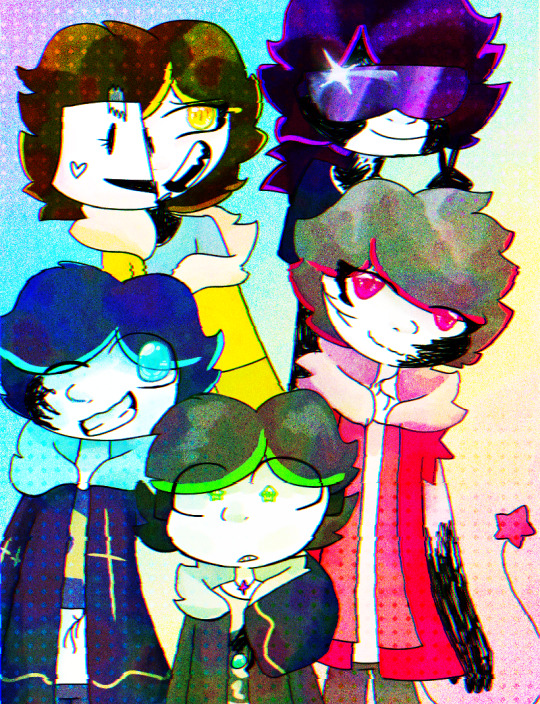
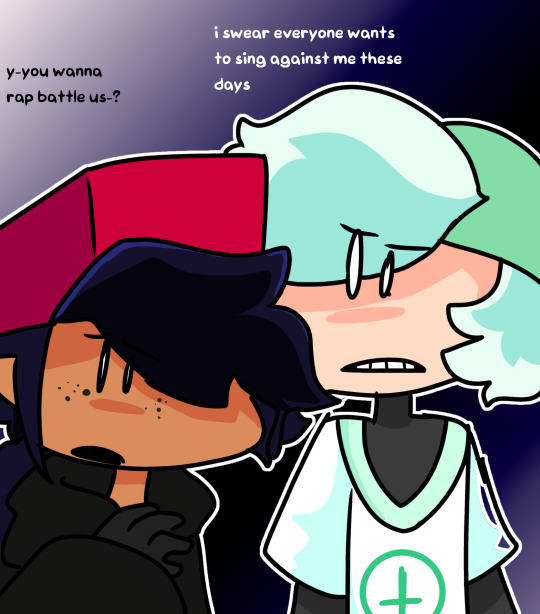
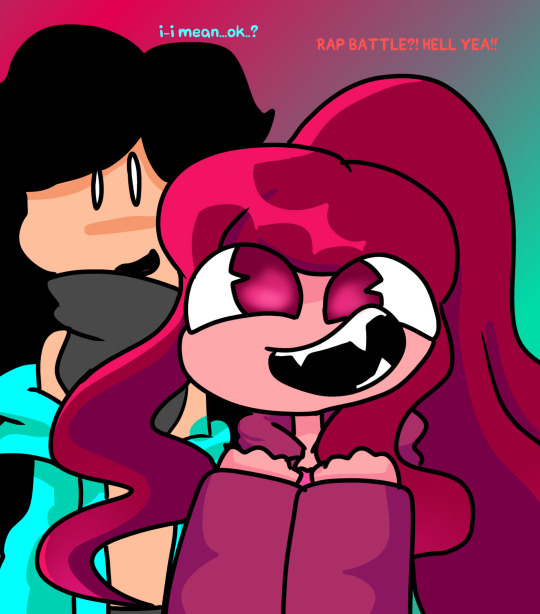
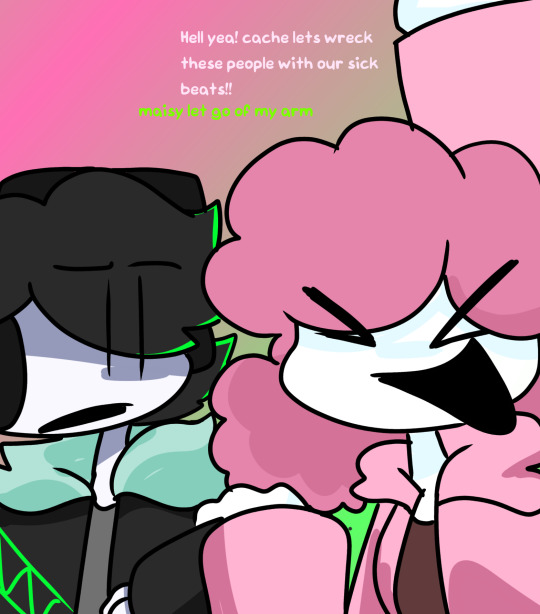
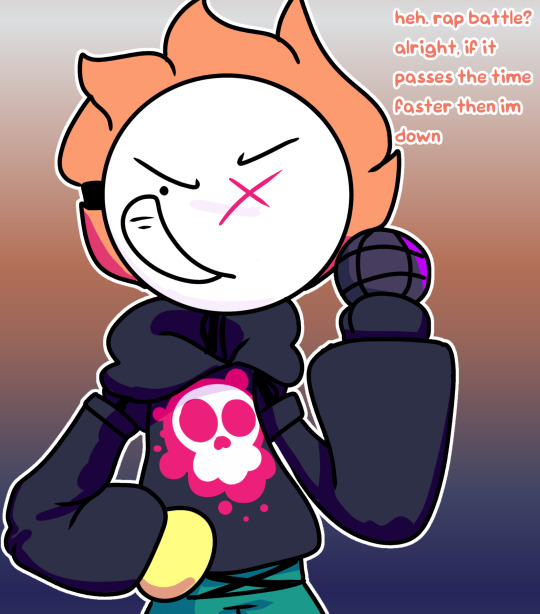
#COLEZ EPIC ART TAG!!#fnf cache#fnf maisy#fnf sierra#fnf kumi#fnf jay#fnf bryce#fnf moxie#gf fnf#bf fnf#fnf eventide#fnf infrared#fnf polar#fnf radar#nusky fnf#bf x gf#fnf dsides#colez ocz
7 notes
·
View notes
Text




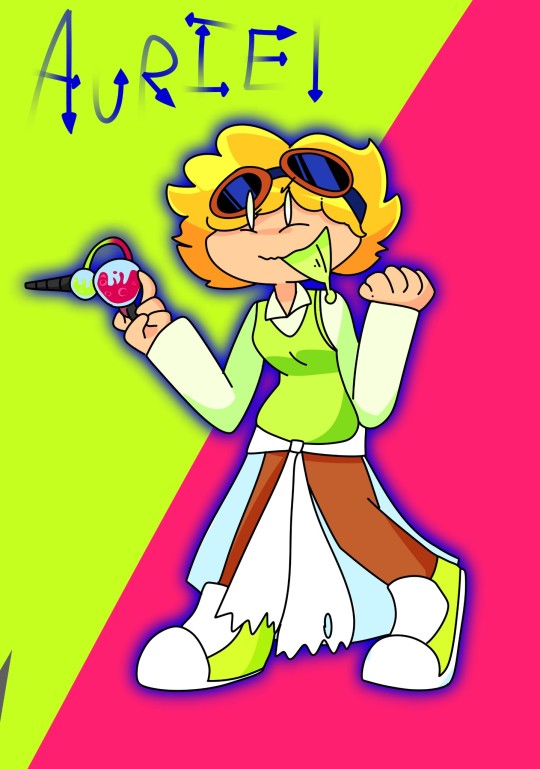




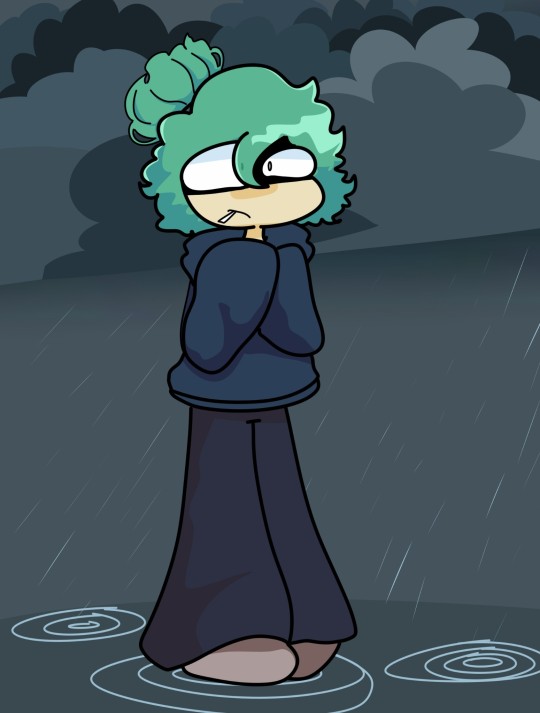
#COLEZ EPIC ART TAG!!#fnf pichi#fnf mangu#fnf kheri#fnf tylenol#fnf aurie#fnf sierra#fnf roxie#colez ocz
7 notes
·
View notes
Text

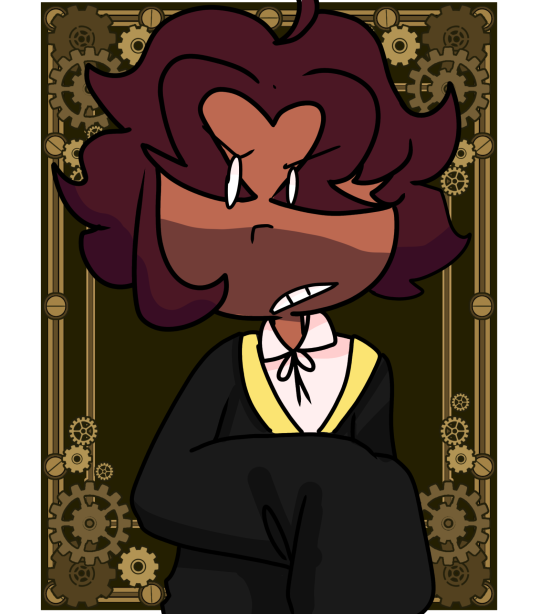

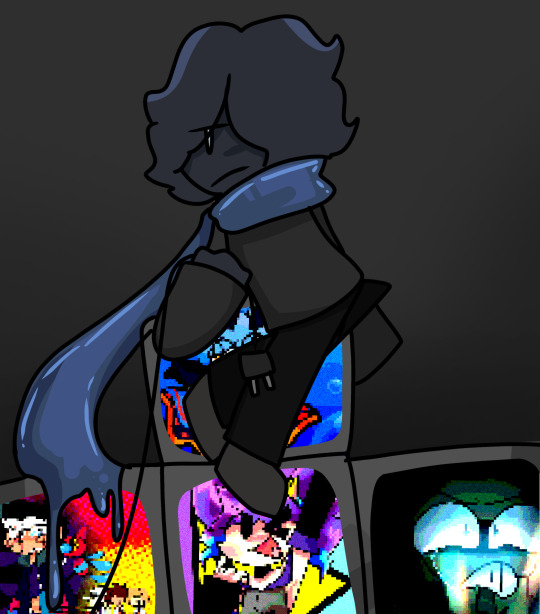


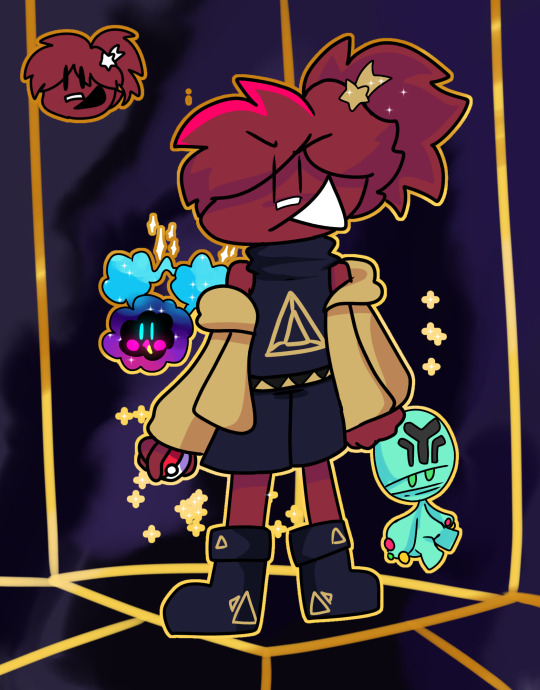

#COLEZ EPIC ART TAG!!#fnf kumi#fnf sierra#fnf cache#fnf maisy#fnf bryce#fnf jay#fnf leila#fnf sylvie#fnf iridea#fnf enceladus#fnf ainsley#fnf redved#fnf cole#fnf alina#fnf celeste#colez ocz
5 notes
·
View notes
Note
Which of your OCs would be Gym Leaders and what would their specialty be? Doesn't have to be mono-type by the way.
Asking because you brought up Pokémon.
DEFINITELY THE WHITEOUT GANG (+ elliott and sylvie)
Elliott would be the first gym leader, he juzt wanted to keep his brother, emillio safe and thought being a gym leader and challenging people would make him strong enough to protect him. Also hez a rock type gym leader, and mainz carbink n boldore
Sylvie would be the second gym leader and alzo a fire type gym leader, and her team would be minior, sizzlipede and braixen. She usez pokemon battling as a bit of sress reliver and way to be out of the house for longer so leila doeznt BOTHER HER.
Kumi would be a water type gym leader and would probably be the weakest of the whiteout gamb, being the 3rd gym leader. Byt she can hold her own !!
Also her ace would be brionne and shed have a tirtouga and carvannah
Shez very comfortable not having to really go out and train her pokemon as shez content being the 3rd gym leader
The 4th gym leader would def be cache, he's very hellbent of getting stronger. hez not actually sure how he even got to 4th, hez actually kinda inexperienced. Actually very inexperienced. Nobody told him he waz the electric gym leader so he. He has a kinda paralysis based team. Or smth.
He has an inkay, elgyem and magneton as his ace, and they all have electric movez. Hez got good coverage but over than that he has. No clue what hez doin
5TH GYM LEADER JAY!!
Jay would probably be a poison type gym leader, and also kinda a bit water like kumi but. Yea. He would be kinda like kumi in a way but stronger and also kinda relying on like. Hazardz like toxic spikez
His team would be whirlipede, muk, dustox, and galarian slowbro as his ace
And he kinda just wantz to battle and learn more about pokemon and human stuff. He iz an alien after all
Bryce would be the 6th gym leader, hez only there cuz when hiz universe got destroyed he waz put there and people assumed he waz the gym leader. He iz. Very lost.
His team iz glaile, porygon z, glaceon, snover and cryoganol
7th gym leader is sierra, ofc. She'z a dark type gym leader, ofc. She usez alot of love based pokemon, she usez morgrem, absol,malamar, mimikyu and shiinotic, she kinda putz on a facade until you get to her final pokemon when you realise that she iz. Absolutely unhinged. She became a gym leader to impress boyfriend tbh
Maisy iz the 8th and strongest of the group, she sayz shez a steel type gym leader but. She doeznt use many steel pokemon. She usez...bronzong and revaroom but mostly usez other pokemon, she usez exploud, chimecho and noivern
#colez ocz#fnf elliott#fnf sylvie#fnf kumi#fnf cache#fnf jay#fnf bryce#fnf sierra#fnf maisy#pokemon au#gym leader
2 notes
·
View notes
Text









#COLEZ EPIC ART TAG!!#fnf sylvie#fnf desiree#fnf elation#fnf cache#fnf jay#fnf bryce#fnf sierra#fnf kumi#fnf maisy#colez ocz
3 notes
·
View notes
Text
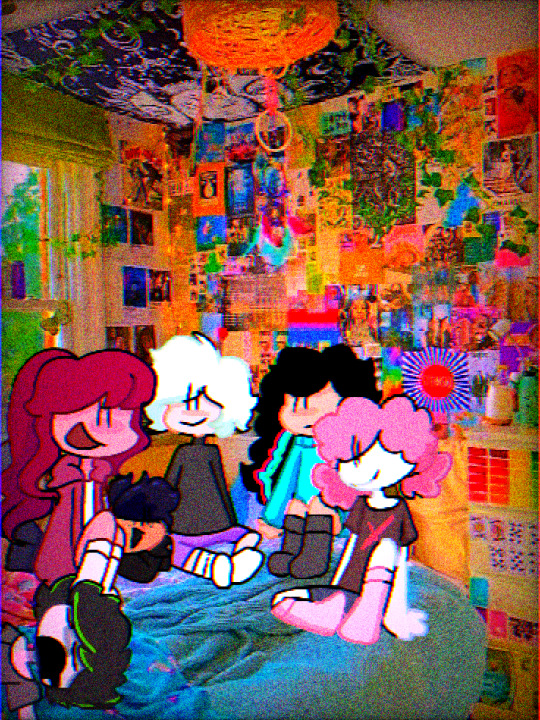
Sleepover
3 notes
·
View notes